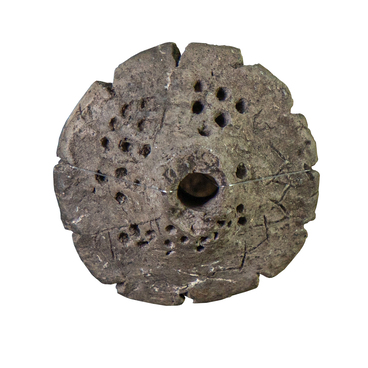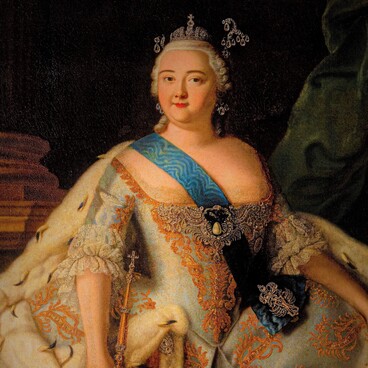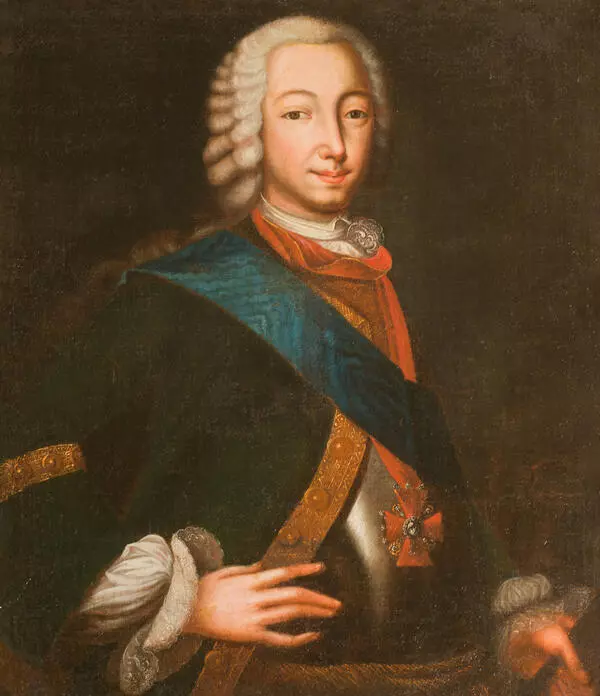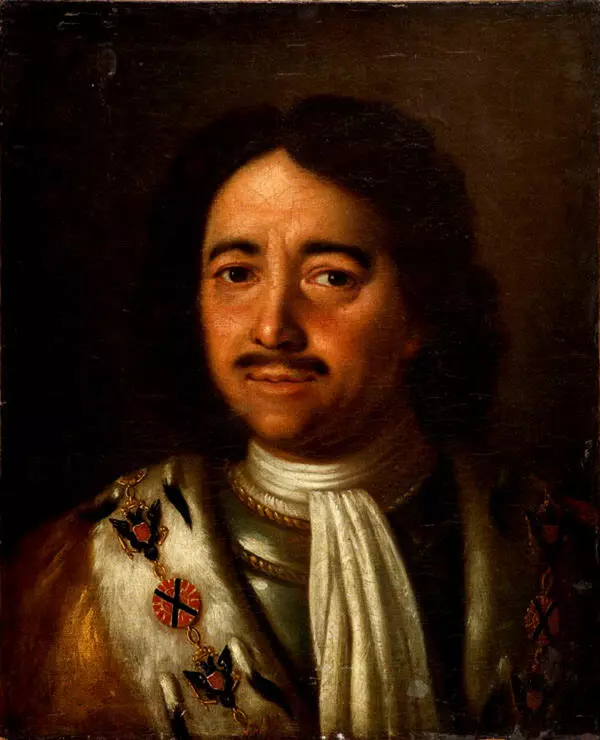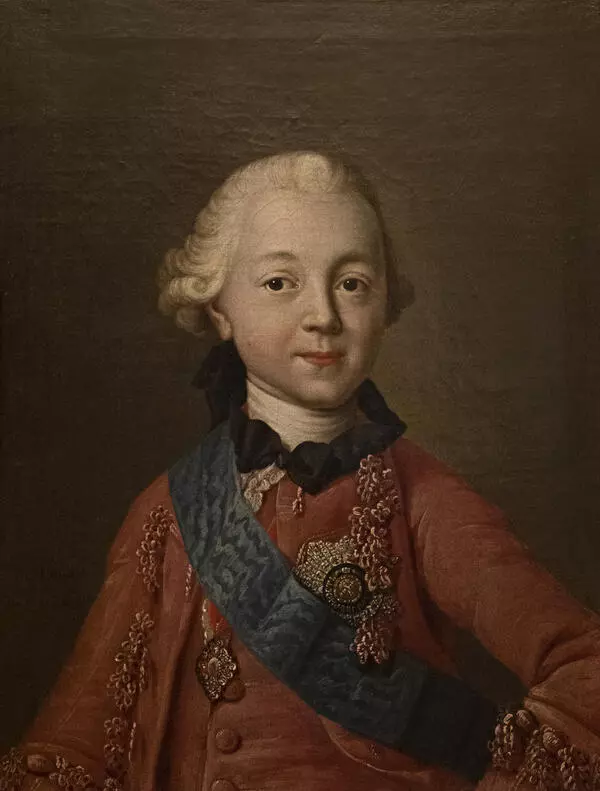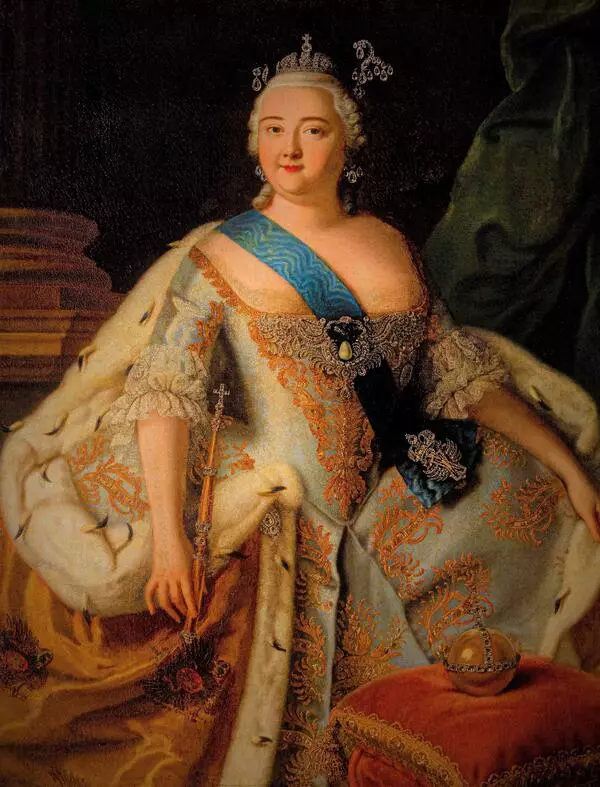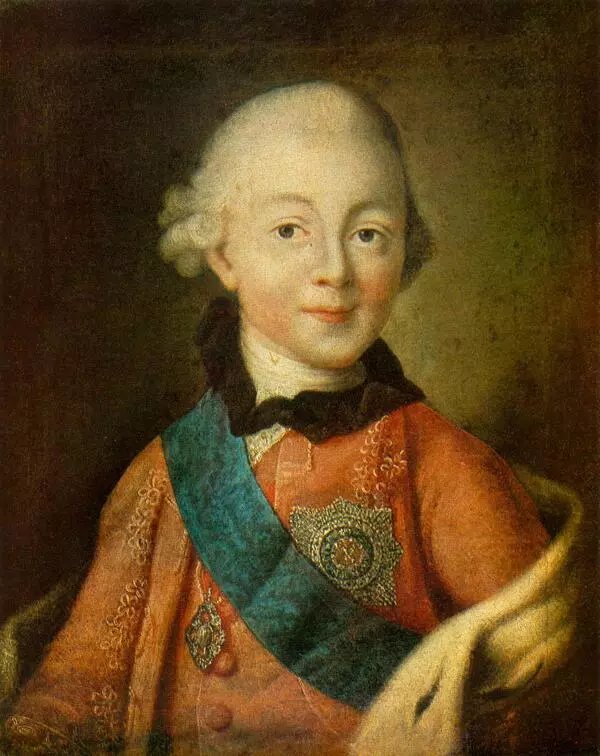The portrait of Peter III from the collection of the Sergiev Posad Museum-Reserve was painted by one of the greatest Russian painters of the 18th century Alexei Antropov.
Since the 18th century, portraits of the Imperial Household members began to appear in the residential chambers of the Trinity Lavra of St. Sergius, as well as in charitable institutions belonging to the monastery. Among them is the coronation knee-high portrait of Peter III. This is a slightly modified and reduced copy of the official ceremonial full-length portrait of the emperor, painted from life. The original can be seen in the Russian Museum. In just six months of the reign of Peter III, Antropov created four copies of this portrait.
The future Russian Emperor Peter III, Prince Karl Peter Ulrich, was the son of Duke Karl Friedrich of Holstein-Gottorp and Tsarevna Anna Petrovna, daughter of Peter I. He could have become the heir to the Swedish throne on his father’s side, but in 1742 the Empress Elizaveta Petrovna brought her nephew to Russia and declared him her heir.
Peter was a passionate admirer of all that was German and never lost his fondness for the Prussian ways. On August 21, 1745, Grand Duke Peter Fedorovich married the Princess Sophia Augusta Frederike of Anhalt-Zerbst, who who was named Ekaterina Alekseevna in the Orthodoxy. This marriage of two complex personalities did not work out to be harmonious. After nine years of married life, Ekaterina Alekseevna gave birth to her husband’s son Pavel, but this did not help to bring the family together.
After the death of Elizaveta Petrovna, her nephew ascended the throne as Peter III. During the six months of his reign, he managed to carry out reforms that eventually led him to a tragic ending. The first state act was the refusal to participate in the Seven Years' War and the armistice with Prussia — it wiped out all the gains and sacrifices of Russia in this war. Peter also disbanded the Guards elite, abolished the Life Guards — regiments protecting the monarch, brought Holstein troops into the capital — his own “poteshny” (toy) regiments. The Emperor issued a decree “On the liberties of the nobility”, which abolished the compulsory service of the nobles, a decree on the abolition of the Secret Chancellery. On June 23, 1762, Peter III was overthrown as a result of a coup organized by the guard, and was soon killed. The uprising of the Guards regiments proclaimed Peter III’s wife Catherine as the Empress.
Since the 18th century, portraits of the Imperial Household members began to appear in the residential chambers of the Trinity Lavra of St. Sergius, as well as in charitable institutions belonging to the monastery. Among them is the coronation knee-high portrait of Peter III. This is a slightly modified and reduced copy of the official ceremonial full-length portrait of the emperor, painted from life. The original can be seen in the Russian Museum. In just six months of the reign of Peter III, Antropov created four copies of this portrait.
The future Russian Emperor Peter III, Prince Karl Peter Ulrich, was the son of Duke Karl Friedrich of Holstein-Gottorp and Tsarevna Anna Petrovna, daughter of Peter I. He could have become the heir to the Swedish throne on his father’s side, but in 1742 the Empress Elizaveta Petrovna brought her nephew to Russia and declared him her heir.
Peter was a passionate admirer of all that was German and never lost his fondness for the Prussian ways. On August 21, 1745, Grand Duke Peter Fedorovich married the Princess Sophia Augusta Frederike of Anhalt-Zerbst, who who was named Ekaterina Alekseevna in the Orthodoxy. This marriage of two complex personalities did not work out to be harmonious. After nine years of married life, Ekaterina Alekseevna gave birth to her husband’s son Pavel, but this did not help to bring the family together.
After the death of Elizaveta Petrovna, her nephew ascended the throne as Peter III. During the six months of his reign, he managed to carry out reforms that eventually led him to a tragic ending. The first state act was the refusal to participate in the Seven Years' War and the armistice with Prussia — it wiped out all the gains and sacrifices of Russia in this war. Peter also disbanded the Guards elite, abolished the Life Guards — regiments protecting the monarch, brought Holstein troops into the capital — his own “poteshny” (toy) regiments. The Emperor issued a decree “On the liberties of the nobility”, which abolished the compulsory service of the nobles, a decree on the abolition of the Secret Chancellery. On June 23, 1762, Peter III was overthrown as a result of a coup organized by the guard, and was soon killed. The uprising of the Guards regiments proclaimed Peter III’s wife Catherine as the Empress.


